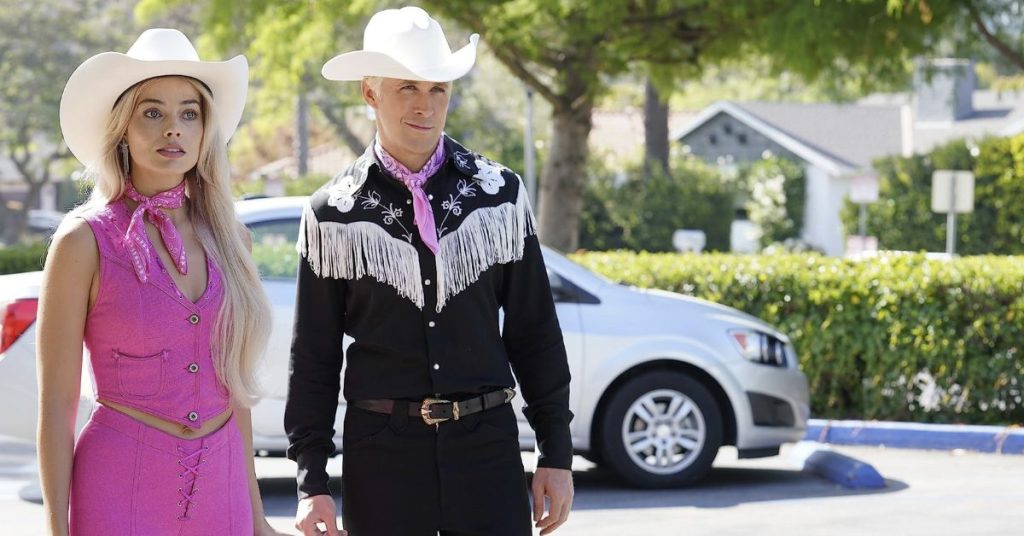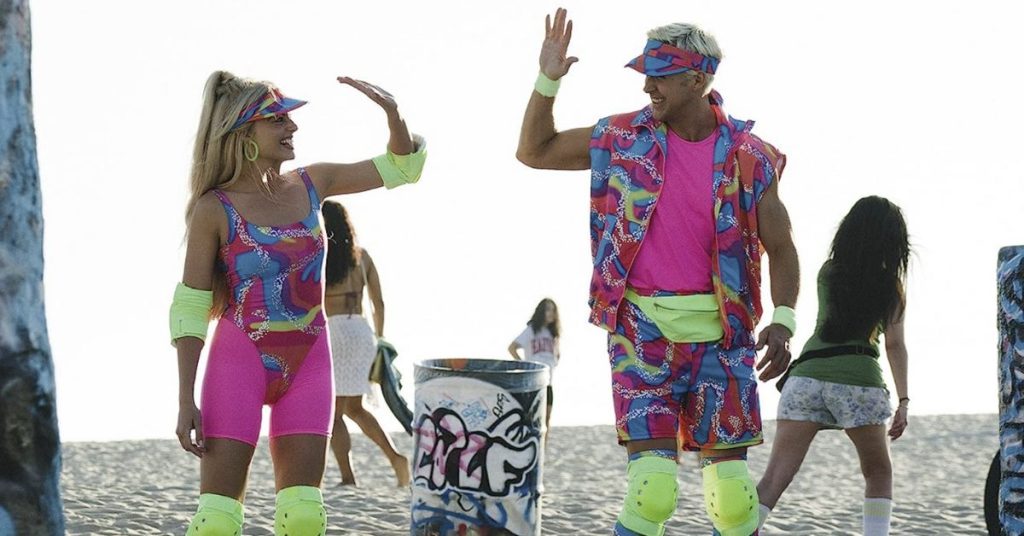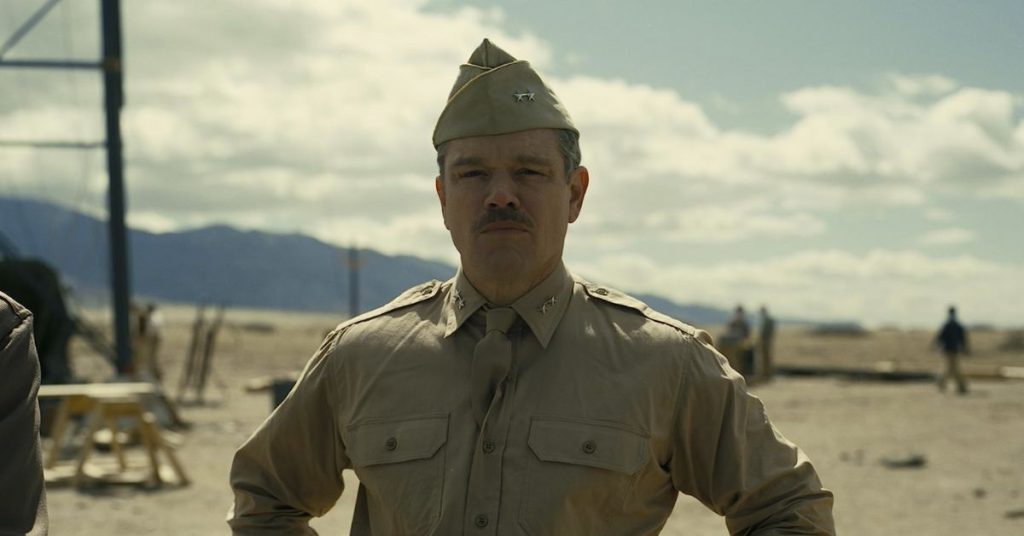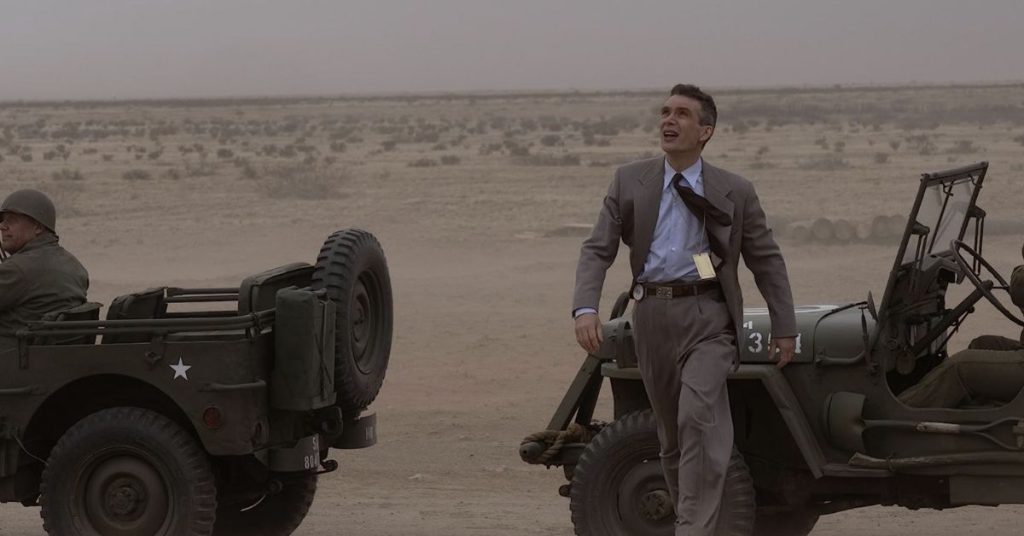By: Laura Bennett
Whether you call it “Barbenheimer” or “Boppenheimer” the mega marathon afforded by two of the biggest movies of the year coming out in the same week is seismic for reasons beyond the combined star power of the two releases.
It’s doubtful many will really embark on an almost five-hour cinema binge (plus trailers) to watch the two back-to-back but between them significant ideas – with great cultural consequences – are right there ready for dissection.
Barbie would be the one to watch first, so let’s start there.
Introducing us to Stereotypical Barbie (Margot Robbie) in Barbieland, Barbie is a pink-saturated world of perfection until its main character starts to develop “symptoms” of the real world like cellulite, flat feet and an awareness of death.

Seeking out wisdom from Weird Barbie (Kate McKinnon) – a doll bearing the jagged haircut and Texta marks of a toy who’s been “played with too hard” by its human owner – Barbie ventures out into the real world to understand the source of her dark emotions.
It would be easy to write-off Barbie as purely a marketing stunt for Mattel and a thinly veiled feminine manifesto, but despite the mixed reviews it’s received, Barbie is an extremely clever consideration of how men and women find identity in proximity to each other, and the conflicting messages women get about who they’re supposed to be in society.

Yes, being Barbieland, Barbie initially anchors “perfect realty” in one where women are at the helm, but Ken’s comedic journey of displacement (played masterfully by Ryan Gosling) actually serves to highlight why a world with only one gender holding complete power wouldn’t be ideal – no matter which way it fell.
At a superficial level, Barbie holds to its PG-rating but if you want to peel back a few layers of the pink there’s great depth in the writing of director Greta Gerwig and husband Noah Baumbach.
Oppenheimer a Stark Contrast
Once you leave the land of pink, it’s a sharp left into the World War II era, with Christopher Nolan’s Oppenheimer.
Based on the theoretical physicist who helped develop the first nuclear weapons – namely those that dropped in Hiroshima and Nagasaki in 1945 – Oppenheimer traces the rise of this controversial scientist and how he ushered in The Atomic Age.

The brilliance of Oppenheimer’s mind is contrasted with his uncertainties about the consequences of what they’re creating, which at one point he realises his team can make but “can’t control how it’s used.”
You may be watching a biopic about one man but the movie speaks broadly to weapons manufacturing and where the responsibility of their impact lies. It’s reminiscent of the “guns don’t kill people, people kill people” rhetoric justifying firearm proliferation.
Cillian Murphy (Inception, The Dark Knight) will no doubt be a shoo-in for an Oscar for his incredible portrayal of Oppenheimer, and Christopher Nolan (Tenet, Dunkirk) could easily get one for best director. Then there’s Robert Downey Jr. who’s brilliant as a support actor in the role of Louis Strauss giving us the lingering line that “genius is no guarantee of wisdom”.
Watching Oppenheimer alongside Barbie is an usual pairing, but weirdly one can make you appreciate the other.
Having watched Barbie, you notice how much of Oppenheimer is spent watching men talk in rooms – which isn’t a slight, just a reality of the story and the truth of when it was set.

There is a female scientist on Oppenheimer’s team, but the guys are concerned about the possible impacts exposure to radioactive material may have on her reproductive system, and don’t know what to do when she claps back saying hers is “less exposed” than theirs. And let’s be honest, they were all doing highly risky stuff they didn’t entirely comprehend.
After seeing the drama of Oppenheimer, you relish Barbie and how considered colour and comedy can be, and that “fun” can also be a pathway to epiphanies.
Whether watched over a day or a weekend, Barbie and Oppenheimer are both worth the big screen experience and, while targeted at entirely different audiences, drive home ideas that affect all of us.
Article supplied with thanks to Hope Media.
All images: Movie publicity
About the Author: Laura Bennett is a media professional, broadcaster and writer from Sydney, Australia.
